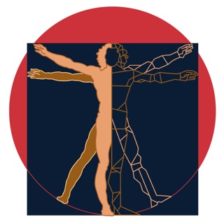There can be no doubt that language and symbolism forms an important part in studies relating to the evolution of cognition hence a great deal of research has been devoted to this. One of the must influential archeologists working on the subject is Francesco d’Errico.
In an article written in 2003 entitled “Archaeological Evidence for the emergence of Language, symbolism, and music – An Alternative Multidisciplinary perspective,” d’Errico, together with others discusses their first hand analysis of recent archeological discoveries relating to the field of cognitive archeology. Among the interesting things they have tackled is Neandertal Cognition.
The Neandertals were an extinct species of human in the genus homo who were closely related to anatomically modern humans. For a long time Neandertals were thought of to be scavengers, opportunistic hunters whose technology and behavior were considered “primitive” indicating the lack of the use of complex language and symbolic thought. Recent discoveries however have associated Neandertal sites with personal ornaments, shaped bone tools, perforated teeth, new lithic technology, the use of pigments and burying their dead.
But does the archeological evidence prove that the Neandertals were capable of symbolic thought?
The debate with regards to this matter still rages to this day. Certainly there can be no definite conclusion as more archeological evidences are uncovered. However recent archeological evidences uncovered, which will be discussed in detail in the next paragraphs, seems to favor the theory that indeed Neandertal cognition is not as primitive as previously thought and that they are capable of symbolic thought.
1.) Personal Ornamentations and Bone tools – The purported manufacture and use by the Neandertal of personal ornaments and bone tools remains a controversial topic and some researchers maintain the position that the collection of object by the Neandertals were the result of trading with their neighbors and that they did not manufacture them. d’Errico’s position however is that the Neandertals were the makers of personal ornaments and bone tools (Specifically the ornaments taken from Chaˆtelperronian site) He arrived at this conclusion by considering two things, a re-examination of the site stratigraphy and a re-examination of production of these items more particularly its function and the by-product in the manufacture of such items.
In examining the site’s stratigraphy, d’Errico’s team has found that the lowest of the three Chaˆtelperronian layers yielded four times the number of awls found in the Aurignacian horizons of the site. This contradicts the hypothesis that the presence of bone tools in the Chaˆtelperronian layers is the result of the reworking of sediments. In terms of radiometric dating, the the Chaˆtelperronian always underlies the Aurignacian, suggesting that those found in the Chaˆtelperronian predates Aurignacian (That considering that the Aurignacian is associated with anatomically modern humans)
In re-examining the production and use of items associated with Chaˆtelperronian layers, it has been found out that Chaˆtelperronian tools differ in the technology of their production and the type of decoration compared to those found in the Aurignacian level. Microscopic analysis indicate that Chaˆtelperronian tools such as bone awls were intensively used to perform hundreds if not thousands of perforation on a variety of materials. Worn tools were reshaped and sharpened using a specific technique. Chaˆtelperronian tools were also found to be marked with decorations (V shaped incisions.) A close examination of knapping techniques and tool types in the Chaˆtelperronian layers indicate that these were not merely imitation from cultural contact as there were no apparent infirmities as compared to that of the technology by anatomically modern humans, leading to the most probable conclusion that those found in the Chaˆtelperronian layers are most likely a result of an autonomous development of local traditions.
The production, use and the presence of decoration in items found in the Neandertal associated Chaˆtelperronian layers all seem to indicate that indeed the Neandertal had advance cognition and are capable of symbolic thought.
2.) Burials – Many archeologist has long regarded primary burials as expressions of symbolic thought. However burials associated with the Neandertals has been a subject of intense debates. Considering that archeological excavation reveal that the Neandertal purposely interred their dead with funerary goods and that in one site (La Ferrassie) aside from the purposeful interring of several individuals the intentional burial of a foetus was also discovered. Considering all of these evidence, d’Errico’s says that it is “. . . difficult to imagine that a human group could excavate a grave, position the corpse in the pit, and offer funerary goods with no formal verbal exchange. Language in such situations helps organize the rituals, transmit custom and express emotion . . . ” Burials associated with the Neandertal are therefore strong evidence that they are capable of symbolic thought.
3.) Language capacity and Neandertal skeletal morphology – Symbolic thought has always been part and parcel of language. The language capacity of Neandertals has also been subject to intense debate. There are those who favor the Neandertals having limited linguistics capacities and there are those who argue the opposite. d’Errico’s position (quoting researchers favoring attributing to Neandertal language capabilities) on the matter is that those who argue for the limited linguistics capabilities of Neandertals base their data on an incorrect reconstruction of Neandertal skeletal morphology particularly the neck and basicranial flatness. Aside from skeletal morphology, d’Errico discuses other anatomical factors including the evolution of speech organs that could prove for and against the capacity of Neandertals for languages. Quoting other researchers d’Errico favors evidence attributing to Neandertals the capacity for language. According to him “Considering phylogentic position of the Neandertals in the human lineage, it is highly likely that their vocal tract was able to produce a wide range of phonemes.” While Phonation is not peculiar to humans, the ability to utilize different phonemes and to combine them to produce comprehensible sentences that communicate specific meaning, which is known as “Phoneme articulation”, is uniquely human. Phoneme articulation however is related to organization of the brain and the nervous system and while Neandertal skulls indicate the presence of Broca’s and Wernicke’s areas (which supports the existence of articulate speech) d’Errico concludes that “the lack of fossil evidence however continue to hinder definitive answers on this subject . . . . . It is difficult to argue that Neandertal language was less complex or less sophisticated than modern language even if reconstruction of their vocal apparatus and auditory systems permit the identification of features that demonstrate a functional inability to produce some of the sounds that anatomically modern humans can produce”
While it is sure that more evidences are continuing to be discovered a closer re-examination of the existing archeological evidences seems to indicate that the odds are in favor of the Neandertals having the capacity for symbolic thought. (probably)
 Hi ! my name is Zigfred Diaz. Thanks for visiting my personal blog ! Never miss a post from this blog. Subscribe to my full feeds for free. Click here to subscribe to zdiaz.com by Email
Hi ! my name is Zigfred Diaz. Thanks for visiting my personal blog ! Never miss a post from this blog. Subscribe to my full feeds for free. Click here to subscribe to zdiaz.com by Email
You may also want to visit my other blogs. Click here to learn more about great travel ideas.


Leave a Reply